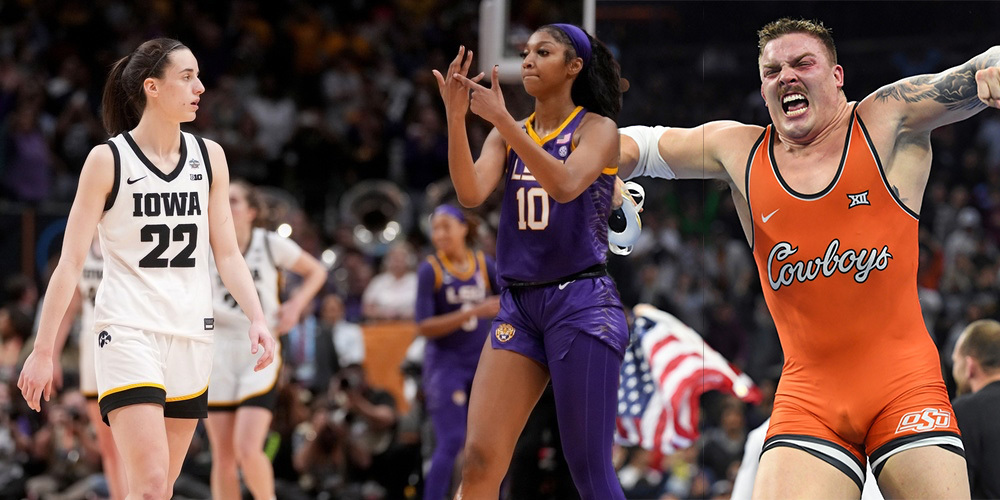While the NCAA Men’s Basketball Tournament grabs most of the attention during this season, several other NCAA championships are also underway in March and April. Sports like wrestling and ice hockey have developed dedicated followings and sizeable viewership in recent years. Unfortunately, the scheduling conflicts with the men’s tournament hinder their ability to maximize audience engagement. Adjusting the scheduling could unlock greater viewership potential for these championships. Wrestling and ice hockey are key candidates for this change, and the women’s basketball tournament should consider it as well.
This column will analyze how these four winter championships—wrestling, men’s and women’s ice hockey, and women’s basketball—can strategically adjust their schedules to attract larger television audiences. ESPN is the exclusive broadcast partner for all NCAA championship events aside from men’s basketball, having re-upped a media rights deal for $115 million annually. However, this leads to a scheduling dilemma in March and April, with 14 separate Division I sports vying for attention and titles, making it crucial to avoid clashes with the most popular events.
Let’s explore the proposed changes.
Wrestling
The NCAA Wrestling Championships, which occur over three days from March 20 to March 22, face serious scheduling issues as they overlap with the first days of the men’s basketball tournament. The men’s tournament monopolizes the sports spotlight, with games running from noon EST to midnight EST. Currently, wrestling has two sessions each day that coincide with March Madness—one airing on ESPNU and the other on ESPN or ESPN2. Unfortunately, the afternoon sessions failed to reach 100,000 viewers, while the evening sessions competed closely with basketball.
A straightforward solution would be to move the wrestling championships to Monday through Wednesday, thus avoiding competition with the first round of men’s basketball. By doing so, wrestling would create favorable viewing slots free from basketball distractions, which could increase casual viewer engagement. While this adjustment may be inconvenient for fans wanting to attend live matches, it offers significant benefits to overall television viewership and the growth of the sport.
Men’s Ice Hockey
The NCAA Men’s Hockey Tournament also stands to benefit from scheduling changes, particularly in its earlier rounds. Currently, the tournament begins on March 27 and concludes on April 12, coinciding with critical rounds of the men’s and women’s basketball tournaments. By shifting the tournament start date back a week, the first and second rounds could largely avoid overlap with basketball, aside from direct competition with the Final Four. Though this strategy might face challenges competing with the Final Four and women’s championship games, it taps into openings where fewer basketball competitions occur, maintaining the Frozen Four’s usual spot on the calendar with limited rival programming.
Women’s Ice Hockey
Shifting the NCAA Women’s Hockey Tournament could yield better television exposure. This year, the Frozen Four was held on March 21, interfering with both men’s and women’s college basketball tournaments and relegating semifinals to streaming platforms. By moving these games to Monday and Wednesday, ESPN would likely have space for better broadcast slots, potentially enhancing viewership.
Women’s Basketball
Perhaps the most contentious potential change would be adjusting the NCAA Women’s Basketball Tournament schedule. Currently, it begins a day later than the men’s tournament, resulting in substantial overlap. Given the increasing popularity of women’s college basketball, a revised schedule could significantly benefit the tournament. A proposed schedule might include first rounds on Monday and Tuesday following men’s Selection Sunday, with subsequent rounds mirroring this structure, allowing for reduced competition with the men’s tournament and maximizing viewership opportunities.
While this shift might sacrifice some traditional weekend events, the payoff in increased engagement and viewership makes it a compelling proposition. This approach would likely draw in a sizable March Madness audience that typically overlooks the women’s tournament in favor of the men’s games, enhancing visibility for the women’s game.
Regardless of individual opinions on these proposed changes, the NCAA has various scheduling options to optimize its championships. While some adjustments are more radical than others, they all have the potential to draw in more viewers and elevate NCAA winter sports overall. As college sports increasingly focus on capturing significant television audiences, exploring innovative scheduling strategies is essential.

